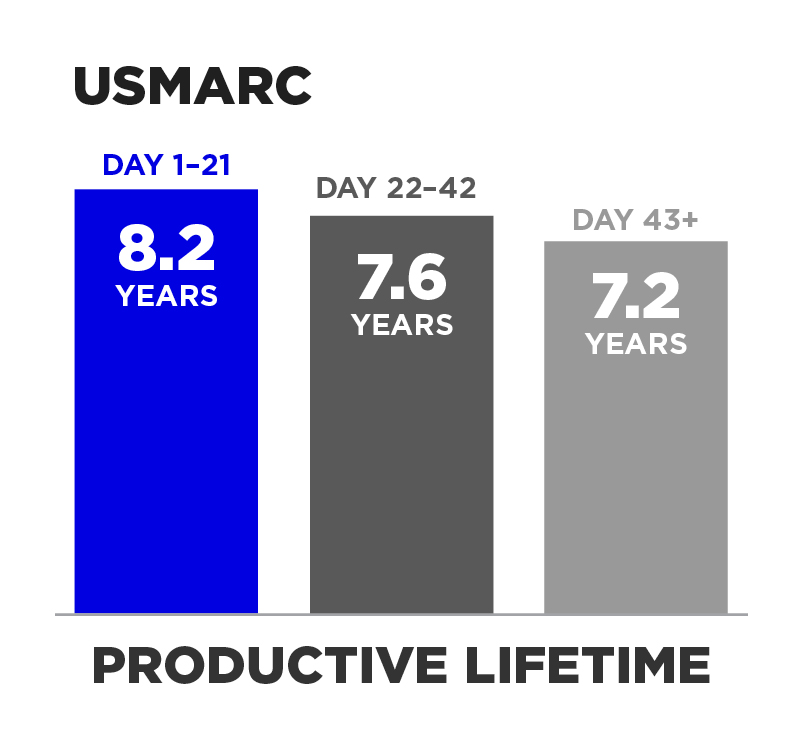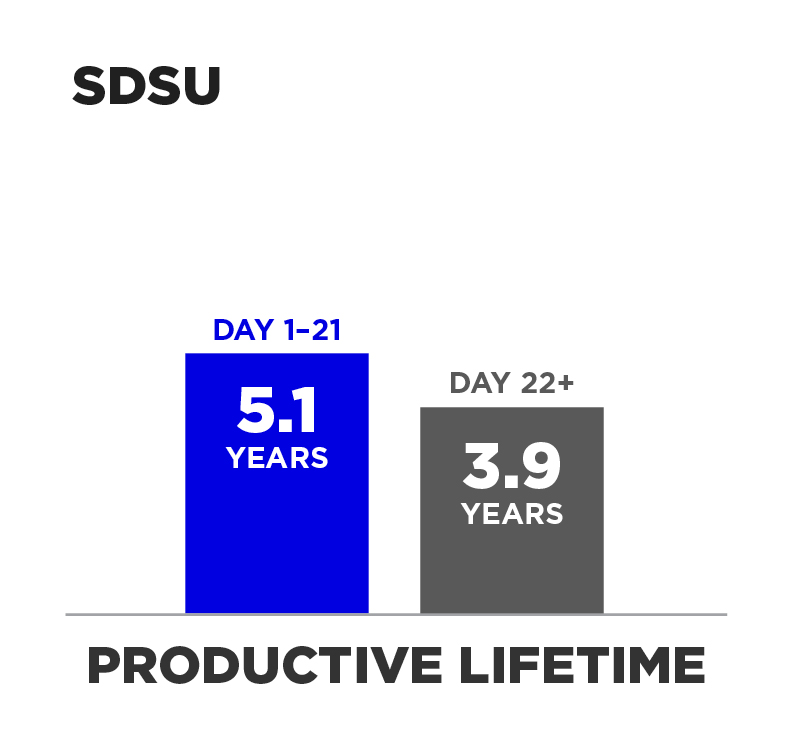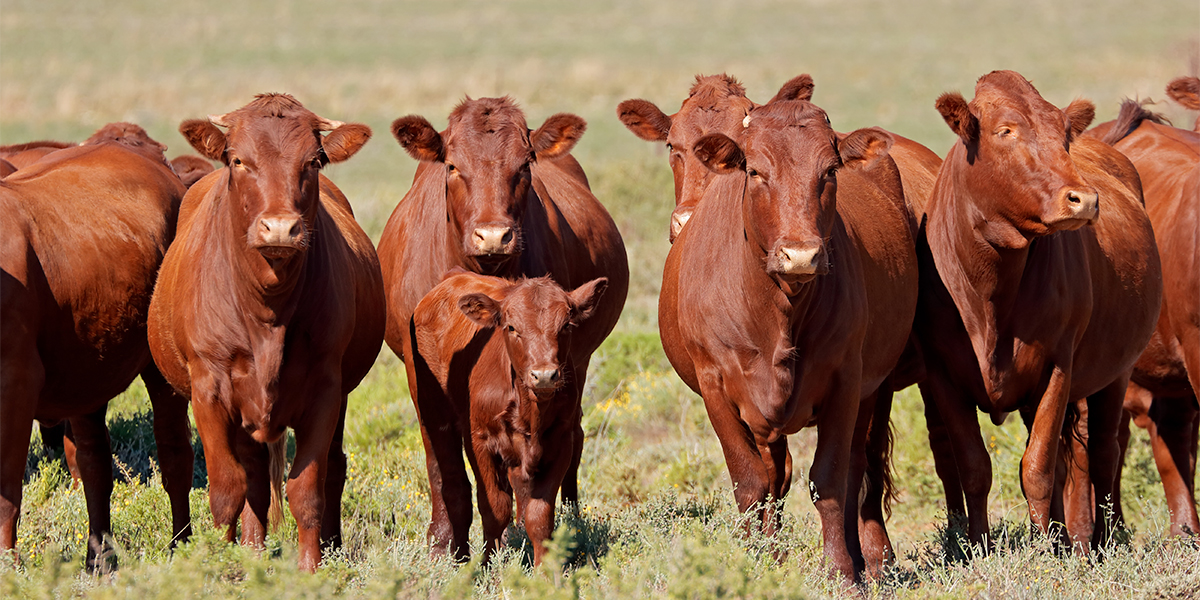How do we select replacement heifers for our breeding herd? We tend to pick the oldest and heaviest of the group, but age and size aren’t everything. Ideally, we should select the heifers of adequate size that also reached puberty earlier. They will be the ones that are ready to breed right away at the beginning of the first breeding season.
Research shows heifers that calve during the first 21 days of the calving season are more likely to continue calving earlier and will stay in the herd longer. This results in more profit over their lifetime.
Checking whether each heifer has reached puberty every year is not practical or cost-effective for most beef producers, but what if we could help ensure they reach their overall genetic potential before they are even born? You may not realize it but reaching a heifer’s genetic potential actually starts with the nutrition of her dam. Feeding proven nutrition to cows during the last five months of gestation can help their female offspring reach puberty earlier.
Let’s look at how helping heifers reach puberty earlier can improve their breeding ability, calving cycle and lifetime profitability.
Improve Longevity to Increase Profitability
Herd longevity is an important factor that influences the profitability of our cow-calf operations. Heifers that conceive earlier in the breeding season will calve earlier in the calving season and will ultimately have a longer tenure in the herd. Additionally, calves that are born earlier in the calving season will be older and heavier at weaning, resulting in greater profitability.
This was demonstrated in a research study in 2013. In this study, longevity data was collected on 2,195 heifers from producers in South Dakota and 16,549 individual heifers at the U.S. Meat Animal Research Center (USMARC). A significantly greater proportion of heifers that calved in the first 21 days of their first calving season had a longer average herd life than those heifers that calved later.1


Read More: Late Breeding Has Negative Effect on Beef Cattle Reproduction
More Estrous Cycles Equals More Breeding Success with Zinpro® Availa® 4
Now that we know earlier-calving heifers have greater herd longevity, how can we help them achieve this outcome?
Heifers should be managed so they achieve puberty with enough time to experience multiple estrous cycles before the start of breeding. The more cycles they complete before the breeding season, the more likely they are to be successful on the first breeding. A 2019 study found the heifers that completed at least one estrous cycle prior to the breeding season had higher first-season pregnancy rates than those completing zero cycles.2 Making this improvement starts before the heifer is even born.
Recent Zinpro® research conducted at Texas A&M University found that feeding performance trace minerals from Zinpro Availa 4 to beef cows during the last five months of gestation resulted in calves that responded more favorably to weaning stress and, even more importantly, replacement heifers that reached puberty earlier.3
On average, heifers born to dams fed Zinpro Availa 4 reached puberty 19 days earlier – almost an entire estrous cycle – than those born to dams fed inorganic trace minerals. The heifers achieved this despite having similar body weights. Based on what we learned from the two other studies we looked at in this post, we know that this extra cycle gives heifers an advantage to breed successfully in their first breeding season and gives them better odds of calving during the first 21 days of the calving season.
While we can’t always check every heifer for pubertal attainment, we can help ensure that our heifers reach puberty earlier by Zinpro® Performance Minerals®.
Check out this blog article to learn more about the benefits of feeding Zinpro Availa 4 during gestation.
Sources
1 Cushman, R.A., L.K. Kill, R.N. Funston, E.M. Mousel, and G.A. Perry. 2013. Heifer calving date positively influences calf weaning weights through six parturitions. J. Anim. Sci. 91:4486-4491. doi: 10.2527/jas.2013-6465.
2 Roberts, A.J., J.N. Ketchum, and R. Funston. 2018. Developmental and reproductive characteristics of beef heifers classified by number of estrous cycles experienced by start of first breeding. Transl. Anim. Sci. 3:541–548. doi: 10.1093/tas/txy118.
3 Harvey, K.M., R.F. Cooke, E.A. Colombo, B. Rett, O.A. de Sousa, L.M. Harvey, J.R. Russell, K.G. Pohler, A.P. Brandão. 2021. Supplementing organic-complexed or inorganic Co, Cu, Mn, and Zn to beef cows during gestation: post-weaning responses of offspring reared as replacement heifers or feeder cattle. J. Anim. Sci. 99:(In press). doi: 10.1093/jas/skab082.

